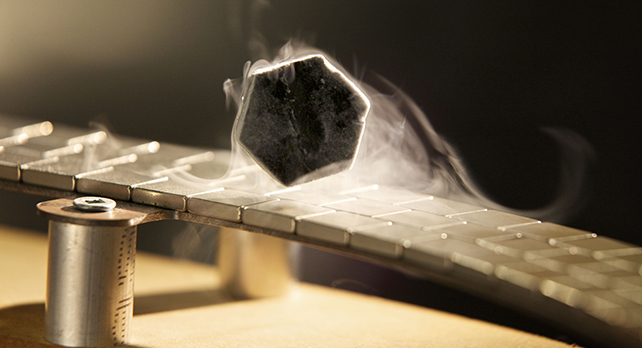

News
News Overview

Ultra-fast laser pulses shed light on elusive superconducting mechanism
An international team that includes UBC physicists has used ultra-fast laser pulses to identify the microscopic interactions that drive high-temperature superconductivity.
In the experiment, to be outlined this Friday in the journal Science, electrons in a prototypical copper-oxide superconductor were excited by extremely short 100-femtosecond (0.0000000000001-second) laser pulses.
As the material’s electrons relax back to an equilibrium state, they release their excess energy via deformation of the superconductor’s atomic lattice (phonons) or perturbation of its magnetic correlations (spin fluctuations).
The researchers were able to capture very fine grained data on the speed of the relaxation process and its influence on the properties of the superconducting system, showing that the high-critical temperature of these compounds can be accounted for by purely electronic (magnetic) processes.
“This new technique offers us our best window yet on the interactions that govern the formation of these elusive superconducting properties–both across time and across a wide range of characteristic energies,” says UBC Associate Professor Andrea Damascelli, Canada Research Chair in Electronic Structure of Solids with the Department of Physics and Astronomy and the UBC Quantum Matter Institute.
“We’re now able to begin to disentangle the different interactions that contribute to this fascinating behavior.”
Superconductivity–the phenomenon of conducting electricity with no resistance–occurs in some materials at very low temperatures. High-temperature cuprate superconductors are capable of conducting electricity without resistance at temperatures as high as -140 degrees Celsius.
The key mechanism that allows the carriers to flow without resistance in superconductors stems from an effective pairing between electrons. In conventional metallic superconductors, this pairing mechanism is well understood as phonon-mediated. In copper-oxides, the nature of the low-resistance interaction between the electrons has remained a mystery.
“This breakthrough in the understanding of the puzzling properties of copper-oxides paves the way to finally solving the mystery of high-temperature superconductivity and revealing the key knobs for engineering new superconducting materials with even higher transition temperatures,” says the paper’s lead author Claudio Giannetti, a researcher with Italy’s Università Cattolica del Sacro Cuore and visiting professor at UBC’s Quantum Matter Institute.
The international collaboration also involved contributions from Japanese, Swiss and American researchers.
The UBC portion of the research program was funded by the Killam Trusts, the Canada Research Chair program, the Sloan Foundation, the Natural Sciences and Engineering Research Council of Canada, the Canada Foundation for Innovation, and the Canadian Institute for Advanced Research Quantum Materials program.
For more information, visit the following websites: